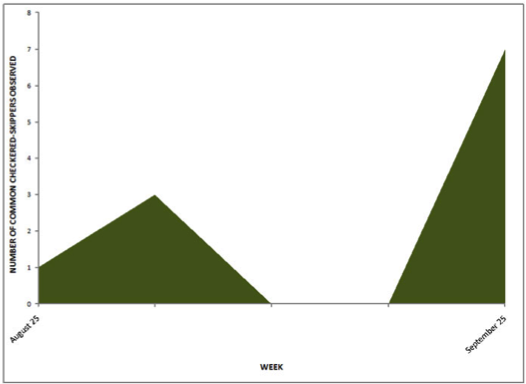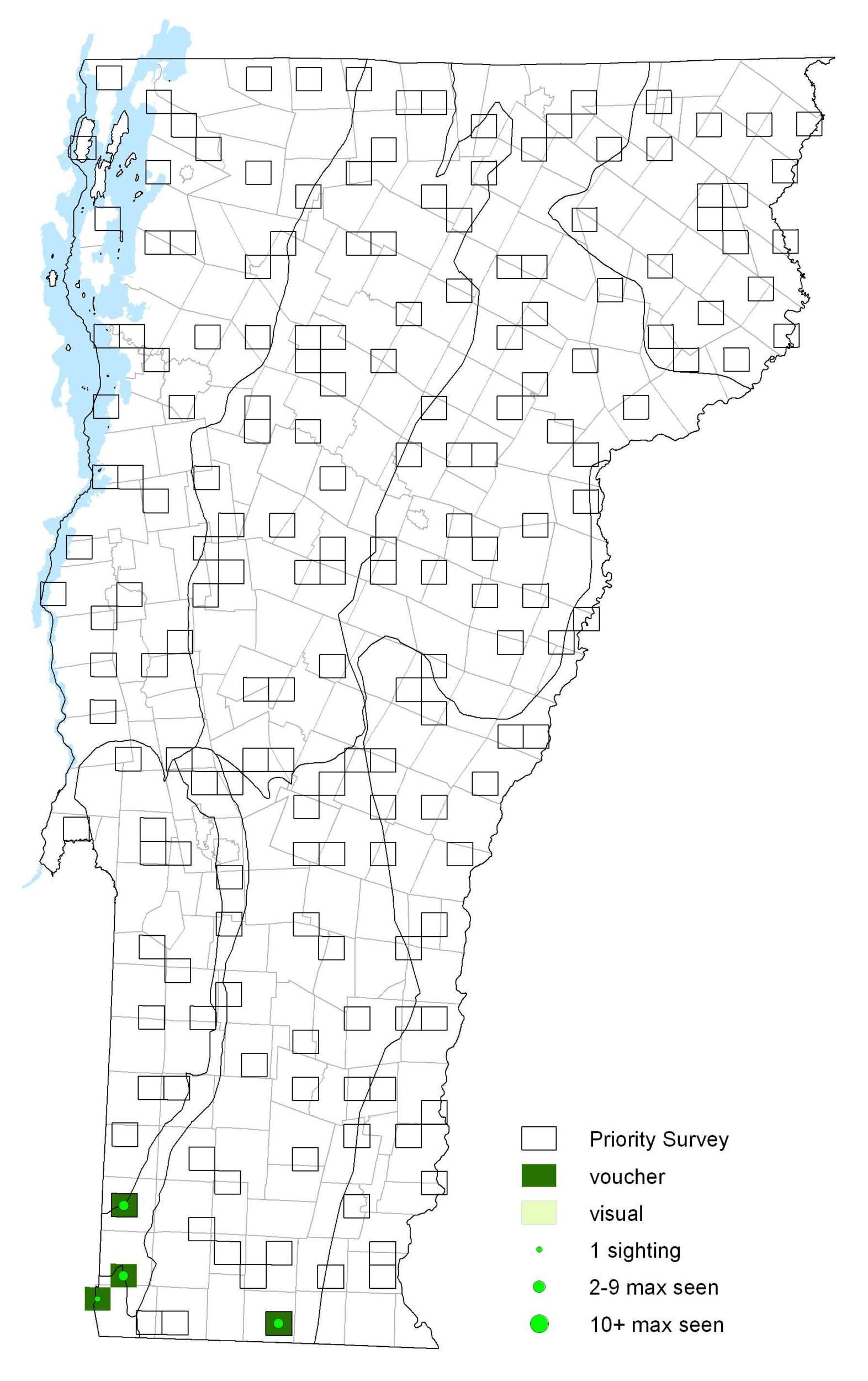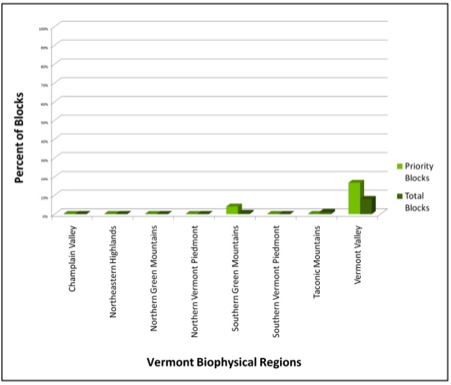|
Vagrant? Conservation Status North American Range |
This dazzlingly skipper periodically immigrates into central New England late in the season. They cannot survive very cold winters and may not be permanent residents north of about the 40th parallel, well south of Vermont. Adults roost exposed on a tall plant beginning in late afternoon.
Identification
Upperside of male is blue-gray; female is black. Both sexes have large white spots, which form median bands across both wings. Fringes of male checkered but black checks often reach only halfway to edge of fringe. Male has a costal fold enclosing scent scales on the upperside of the forewing. Underside is dull white with dark gray or olive bands. Spots of the hindwing marginal row are very small; spots of the submarginal row are larger. This species is separated from the White checkered-skipper (Pyrgus albescens) with confidence only by dissection and examination of the male genitalia.
Flight
Adults found from March to September in the north, it is only a late season vagrant in Vermont only found in later August and September. Extreme dates: 25 August 2005 in Pownal (K. Hemeon) and 26 Septemeber 2007 in Bennington (T. Armata).
Distribution and Habitat
Probably a vagrant or regular migrant in Vermont, it was only found in the southwest region of the state during VBS. There were four records. Preferred habitats are open areas with low vegetation and bare soil, and they can be found in gardens and yards. Adults nectar at fleabane (Erigeron), aster (Aster), Red Clover (Trifolium pratense) and knapweed (Centaurea). Host plants include several species in the mallow family (Malvaceae) including Globemallows (Sphaeralcea) and Hollyhock (Alcea).







